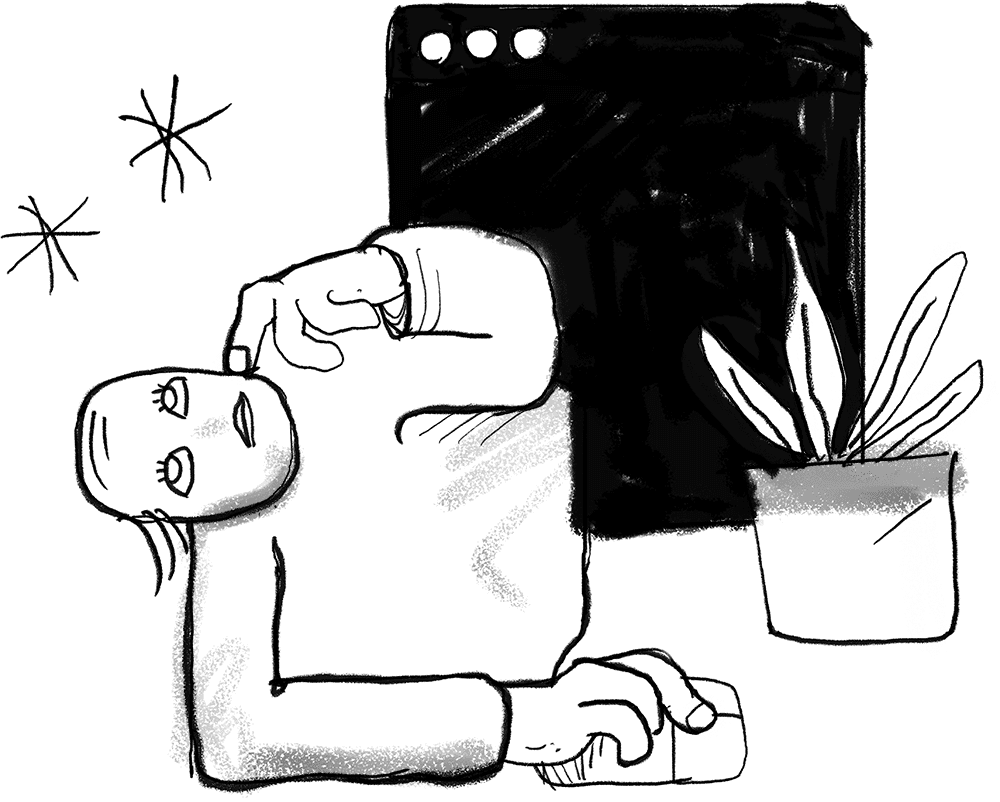Therapists are no strangers to late-night charting, missed notes, or the admin burden that drags on long after the last session.
If you’ve ever felt drained by documentation, AI scribes may be the breakthrough you didn’t know you needed.
This blog breaks down how AI scribes work, how they support clinical documentation in therapy practices, and how they help you spend less time behind the computer screen, and more time with your clients.
What is an AI Scribe?
An AI scribe is an AI-powered tool that listens to patient-provider conversations, transcribes them using automatic speech recognition (ASR), and structures the content into clinically formatted notes (like a SOAP note).
It leverages large language models and generative AI to generate draft clinical documentation that can be reviewed and added into your electronic health record (EHR).
These tools support primary care, therapy, and other medical specialties, making them incredibly versatile for both physicians and therapists.
How Do AI Scribes Work?
1. Ambient Listening
AI scribes use ambient listening to passively capture patient encounters without interrupting the therapeutic flow. The system listens discreetly, whether during in-person visits or virtual sessions, without needing to be activated by a command.
2. Automatic Speech Recognition (ASR)
Through ASR, the scribe converts audio recordings into structured text in real time. These tools maintain high accuracy even in emotionally complex or conversational therapy settings.
3. Processing with Large Language Models
Once transcribed, the session is processed using large language models (LLM) and artificial intelligence (AI) to extract relevant clinical information. These insights are organized into structured clinical notes customized to your style and format.
4. EHR or Note System Integration
The resulting note, be it SOAP, DAP, BIRP, or freeform, is exported into your documentation system, ready for review and finalization. This enables streamlined workflows and reduces documentation burden.
Why AI Scribes Matter in Mental Health Practice
Reduce Documentation Burden
AI scribes dramatically reduce the time spent on clinical documentation, freeing you from repetitive data entry and allowing you to finish your workday on time.
Enhance Patient Interactions
By eliminating the need to split attention between the patient and your computer screen, therapists can remain fully present in the session, improving patient engagement and therapeutic outcomes.
Increase Efficiency
With faster documentation and fewer manual steps, therapists can maintain quality care while potentially seeing more patients without burnout.
Improve Accuracy and Compliance
Capturing the full scope of the patient interaction, including nonverbal cues and relevant clinical information, helps improve the accuracy, compliance, and quality of your medical records.
Reduce Physician Burnout
By lightening the administrative load, AI scribes support long-term clinician well-being and reduce burnout, especially for those managing high caseloads or insurance-heavy practices.
What Therapists Should Look for in an AI Scribe
Feature | Why It Matters for Therapy |
|---|---|
Customizable note templates | Allows you to document in SOAP, DAP, BIRP, or narrative styles |
High transcription accuracy | Essential for complex conversations and emotional nuance |
HIPAA compliance & informed consent | Ensures patient privacy and legal protection |
Real-time processing | Speeds up documentation and allows same-day completion |
EHR integration | Syncs directly with your EHR ,no more manual copy-pasting. Saves time, reduces errors, and ensures all notes are securely stored in the right place, instantly. |
Ability to capture nonverbal cues | Supports therapy-specific documentation needs |
Patient data protection | Ensures audio and notes are encrypted, not stored long term |
Clinical Use Case: AI Scribes in a Therapy Session
Imagine you’re running a trauma-focused CBT session. You start the session, and your AI scribe begins ambient listening in the background. As you and the client talk, the scribe captures key quotes, symptoms, insights, and therapeutic interventions, all in real time.
After the session, you’re presented with a draft note in your preferred format.
It includes clinical observations, patient response, and treatment planning based on what was discussed. All you need to do is review, make minor edits if needed, and finalize.
This workflow helps reduce pajama time, improves documentation quality, and strengthens the therapeutic relationship by allowing deeper presence during sessions.
Benefits for Providers, Patients, and Practices
Stakeholder | Key Benefits |
|---|---|
Therapists | Faster documentation, reduced cognitive load, less time spent on admin |
Patients | Greater attention and emotional presence from providers |
Healthcare Providers | Better compliance, data accuracy, and streamlined workflows |
Practices | Lower operating costs, ability to serve more patients, higher documentation quality |
Key Technologies Behind AI Scribes
Technology | Role |
|---|---|
Automatic Speech Recognition (ASR) | Converts session speech into text |
Large Language Models | Extract and organize clinically relevant information |
Generative AI | Writes structured SOAP notes or narrative summaries |
Machine Learning | Improves over time with clinician feedback |
AI Technology Integration | Enables syncing with EHRs and practice software |
Some Common Misconceptions
Misconception | Reality |
|---|---|
"AI scribes replace humans." | They support documentation, but therapists remain the clinical authority. |
"They’re only for large health systems." | Solo therapists and small private practices benefit equally. |
"They store patient audio permanently." | Reputable scribes delete audio after processing. |
"All notes sound robotic." | Many tools now match your tone and formatting preferences. |
Meet Supanote: AI Scribe Built for Therapists
Most AI scribes are designed with general medical settings in mind. But therapy notes aren’t like physician notes, and Supanote understands that.
Supanote is an AI-powered scribe built specifically for mental health professionals. Whether you're a solo clinician or part of a group practice, Supanote helps you capture sessions securely, generate audit-ready notes in your preferred format, and stay focused on the therapeutic relationship.
What Makes Supanote Different?
- Designed for Therapy: Supports SOAP, DAP, BIRP, and narrative styles, no clinical content is lost in translation.
- Live Session Capture: Use ambient listening to transcribe therapy sessions in real time (in-person or over Google Meet, Zoom).
- Customizable AI: Your notes reflect your voice, not a generic template. Supanote learns from your edits.
- HIPAA-Compliant: Secure storage, encrypted data, and no audio saved after processing—ensuring patient privacy.
- Minimal Clicks: Notes are ready right after your session. Just review, adjust, and you’re done.
With Supanote, therapists report saving hours each week on documentation, reducing burnout, and improving the quality of care.
Final Word: AI That Listens, So You Can Too
AI scribes aren’t about replacing therapists, they’re about helping them focus on what matters. With better note accuracy, time savings, and reduced burnout, AI scribes allow you to spend less time documenting and more time doing what you do best: caring for people.
And with Supanote, that experience is tailored to the needs of mental health professionals, simple, secure, and built for the way you work.
Ready to try? 10 notes on us!
Login to your Supanote account and instantly access 10 free notes
Get it Now!
FAQs About AI Scribes for Therapists
Q: How do AI scribes benefit patient care?
A. They improve therapist presence, reduce distraction, and enhance the quality and accuracy of documentation—ultimately improving outcomes.
Q: Is AI scribing HIPAA-compliant?
A. Yes, as long as the tool uses encryption, secure storage, and signs a Business Associate Agreement (BAA).
Q: Do I still need to review the notes?
A. Yes. While the draft saves time, therapists remain responsible for reviewing and approving the final documentation.
Q: Will my notes lose clinical depth?
A. Not if you choose a platform that allows customization and adapts to your therapy approach.
Q: Can it be used for Zoom or virtual therapy sessions?
A. Yes. Many AI scribes support remote sessions with high-quality ambient listening features.
Q: Does it capture emotional or affective content?
A. Some advanced scribes can tag affect, tone, and client emotion alongside content.
Q: Can it adapt to different documentation styles?
A. Yes. Platforms like Supanote allow customization across note formats, helping match your workflow.
Q: How much time will I save?
A. Most therapists report saving 5–10 minutes per session—translating to hours each week.
Q: Is it expensive for solo practices?
A. No. Most tools offer affordable plans for solo clinicians, especially when weighed against the value of time saved.
Q: Do AI scribes work across specialties?
A. Yes. While widely used in medicine and primary care, they’re increasingly built to support mental health, speech therapy, and more.
Try Supanote for free
Automated, HIPAA-compliant Progress Notes so you can focus on your clients
Get it Now!
